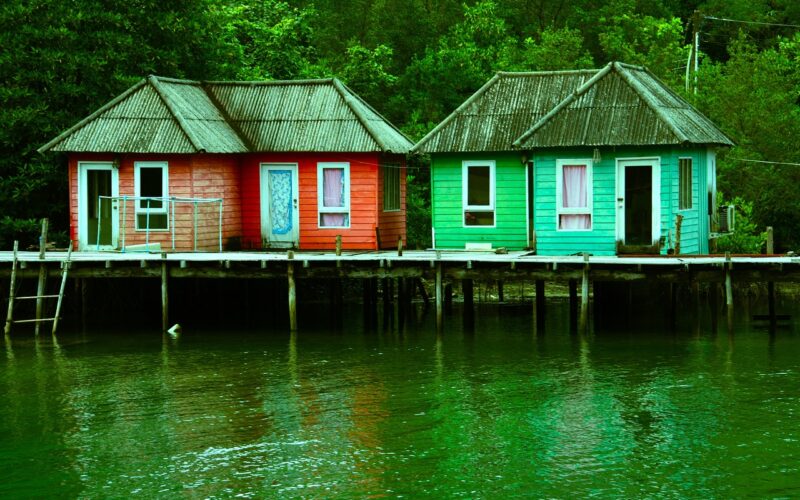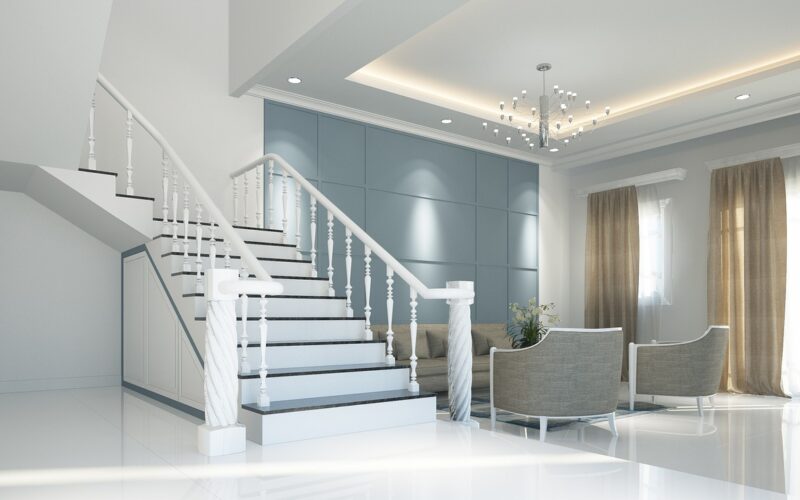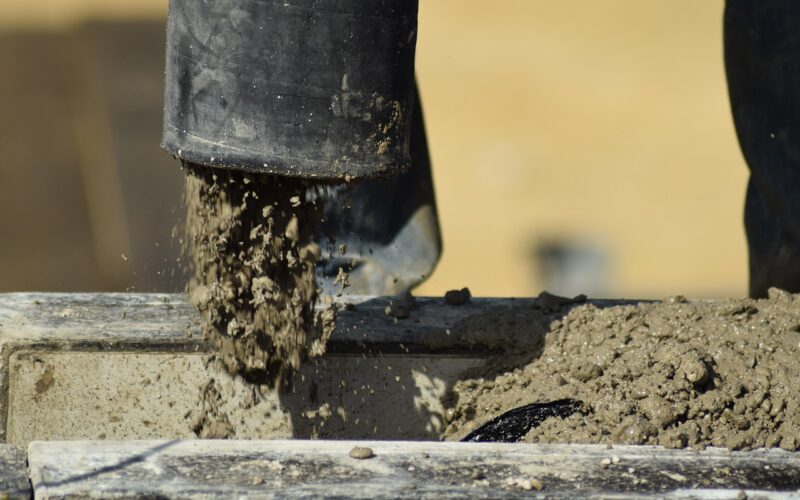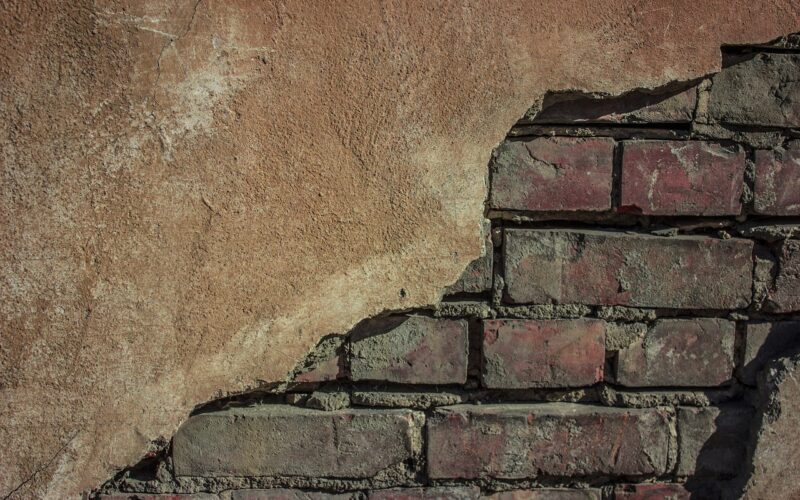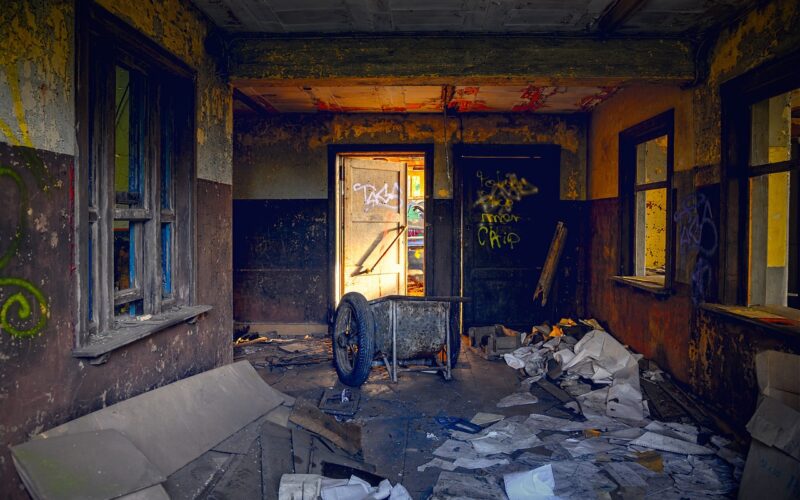Made For Flooding
Stilted homes have been an ingenious solution for communities living in flood-prone areas. These elevated structures protect inhabitants from flooding, pests, and sometimes even harsh weather conditions.
South-East Asia
One of the most well-known regions for stilted homes is South-East Asia. Countries like Thailand, Cambodia, and Vietnam have long relied on stilted architecture to combat seasonal flooding. In places like the Mekong Delta, houses are elevated to stay above water levels that rise considerably during the rainy season. Constructed mainly from bamboo and wood, these homes are both sturdy and flexible, able to withstand the dynamic forces of water.
In Cambodia, the floating villages on Tonlé Sap Lake are a stunning example of stilted homes adapted to extreme environments. During the dry season, the homes stand high on their stilts, while in the wet season, rising waters make it seem as if the houses are floating. This adaptability is crucial for residents who rely on fishing as their main livelihood.
Lagoon settlements in Nigeria
Makoko, often referred to as the "Venice of Africa," is a sprawling settlement in Lagos, Nigeria, where houses on stilts dominate the landscape. Built over the Lagos Lagoon, these homes are essential for navigating the watery terrain. The community relies heavily on boats for transportation, with everything from schools to markets accessible by water.
The stilted homes of Makoko are constructed from timber and bamboo, materials readily available in the region. This architectural style helps the community deal with the frequent flooding that can occur due to heavy rains and the rising tides of the lagoon. While living conditions in Makoko are challenging, the stilted homes provide a unique and practical solution to the environmental challenges faced by its residents.
Indigenous communities in the Amazon basin
The Amazon Basin, with its vast network of rivers and fluctuating water levels, is another region where stilted homes are prevalent. Indigenous communities like the Yanomami and the Ticuna have built their homes on stilts for centuries, integrating this architectural technique into their cultural practices.
These stilted homes, often called "palafitos," are made from locally sourced materials such as wood and palm leaves. Elevating the homes not only protects against flooding but also reduces the risk of disease by keeping inhabitants away from stagnant water, which is a breeding ground for mosquitoes. The elevated structures also offer a vantage point to monitor the surrounding environment for potential threats.
The bayous of Louisiana, USA
In the United States, the bayous of Louisiana are famous for their stilted homes. These elevated structures are designed to withstand the frequent flooding and hurricanes that affect the region. In areas like New Orleans and the Atchafalaya Basin, stilted homes are a common sight, often painted in vibrant colours that reflect the local culture.
The construction of these homes involves sturdy materials like cypress wood, which is resistant to rot and insect damage. The elevation helps to safeguard the homes from water damage and provides ventilation underneath the house, which is essential in the humid climate of Louisiana. Additionally, the height offers some protection from storm surges during hurricanes.
Coastal areas of the Pacific Islands
The Pacific Islands, including Fiji and the Solomon Islands, are also home to many stilted homes. These regions face the dual threats of sea-level rise and tropical storms, making elevated housing a necessity. The stilted homes, known locally as "bure" or "fale," are typically built using coconut wood and thatch.
Elevating the structures helps to mitigate the impact of tidal surges and allows for airflow, which is crucial for maintaining a comfortable living environment in the tropical heat. These homes are often part of larger village complexes, where communal living and collective resilience are vital for survival.
The cultural significance of stilted homes
Beyond their practical applications, stilted homes hold significant cultural value in many societies. They are often intricately designed and serve as a symbol of resilience and adaptation. In many communities, the construction techniques and materials used are passed down through generations, preserving traditional knowledge and craftsmanship.
Stilted homes are more than just a response to environmental challenges; they are a testament to human ingenuity and the ability to live harmoniously with nature. By elevating their homes, these communities demonstrate a profound understanding of their environments and an unwavering commitment to preserving their way of life.
From the floating villages of Cambodia to the bayous of Louisiana, stilted homes are a remarkable example of how architecture can adapt to the most challenging conditions. These elevated structures not only provide protection but also foster a sense of community and cultural continuity, making them an integral part of the landscapes they inhabit.

